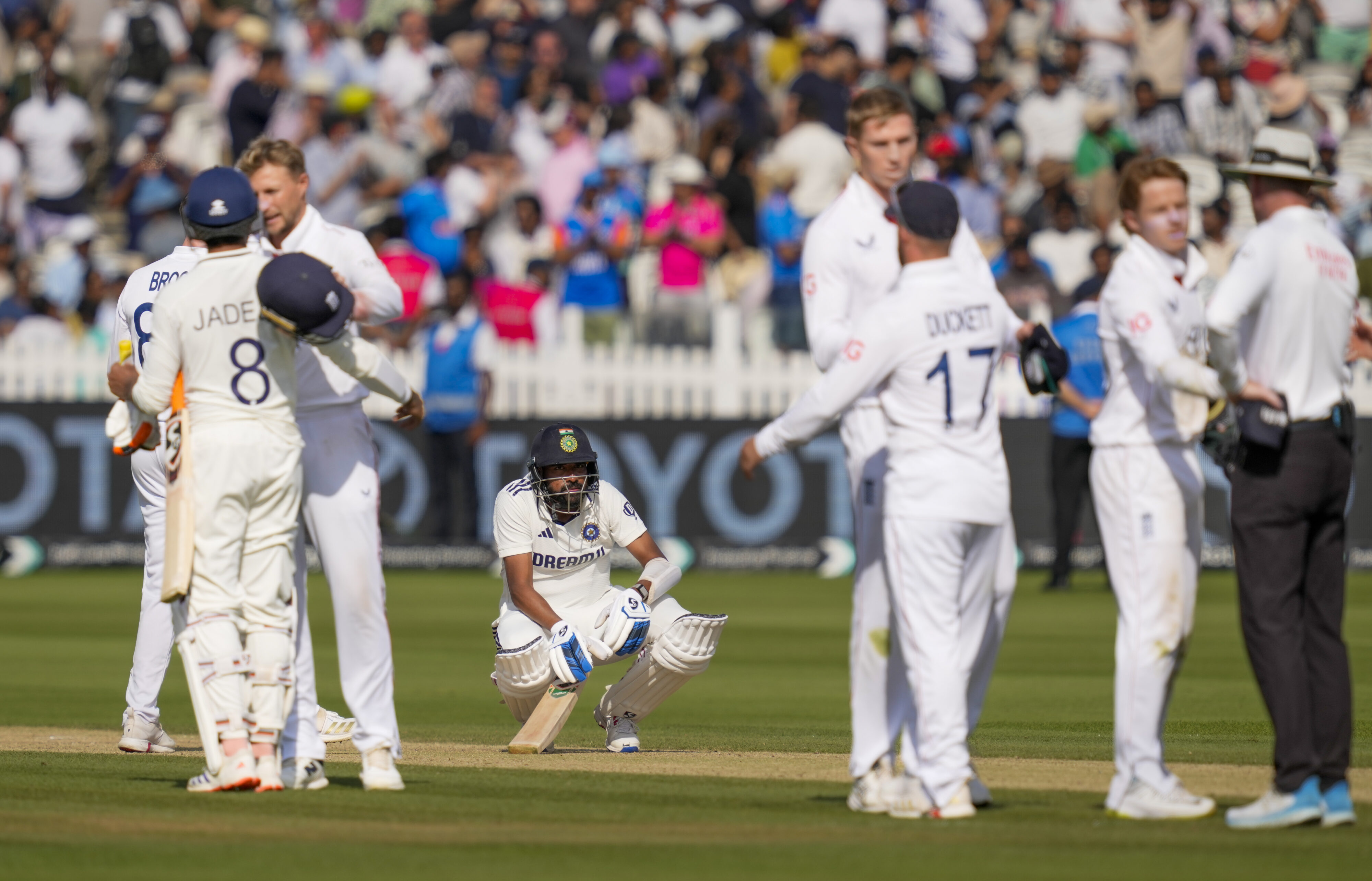Lord’s loss & loss in Lord’s
Two contrasting images from recent sporting contests reflected the range of heartbreaking emotions a sportsman can experience. One was from the Wimbledon semifinals and the other from the final moments of the riveting Lord’s Test match.
Watching Novak Djokovic realise at the Wimbledon centre court that age and time, more than Jannik Sinner’s youthful energy, were the reasons of his downfall was a painful moment for tennis fans. Djokovic, the man who taught the world the meaning of resilience and invincibility, never giving up even when a loss appeared inevitable, was that day a defeated man much before the match got over.
There was lethargy in his movements. The man who could fly on the court, speed-skating while chasing balls to make seemingly impossible retrieves, was finding it difficult to reach the ball. The stream of winners which he could hit from impossible angles had deserted him. Time, that eternal enemy of all things living, had made him literally immobile. His anguished face reflected the misery of a man who had seen death from which there is no coming back.
Djokovic that day was being pummelled by a man who was young, fresh, energetic, powerful and brimming with self-belief. The speed of Sinner’s legs, the power of his strokes and the hunger to devour the opponent — hallmarks of those who are talented, ambitious, focused and seeking greatness — were impossible to miss. Djokovic must have realised in those vulnerable moments how fragile life can be and immortality can only be achieved in memory, not in the physical world.
In the press conference after the match, he was in a mood to confess and acknowledge the new reality. Djokovic, the supreme athlete, who had many times tamed the magical skills of Roger Federer and diffused the gladiatorial combativeness of Rafael Nadal, could no longer command the body to perform as dictated. For the first time in his long, glorious career, he had sighted the end. The mind was still willing, but the body that had countered and overcome many slings and arrows of the world for 38 years had finally raised its hands.
Though he promised to return, not turning away from the sport that has sustained him as much as he has elevated the sport, he left no one in doubt that he was walking away from the blaze of glory into the shade of the setting sun.
A fortnight later, not very far away from Wimbledon’s centre court where Djokovic walked away to the thunderous ovation and appreciation of thousands of moist eyes, a gripping, edge-of-the-seat drama was being enacted by two teams possessing nerves of steel and a resolute will to not give up without a fight.
Unlike tennis, where the destiny of a match and the responsibility of loss and triumph is in the hands of an individual, cricket is a team sport where the collective contribution of 22 men decides the fate of a match. It may be a team game, yet even here the sport is so structured that personal heroics are celebrated as much as they are in individual sports. A tennis duel at best may stretch to five hours, a cricket Test match goes on and on, five days being the limit. It is a crucible where ingredients of various flavours and texture are mixed, grinded and slow-cooked in an effort to produce a dish that could be savoured for ages.
In the Lord’s Test, the third of the series between England and India, the match had for all five days flowed and ebbed like a symphonic piece that had arrested the attention of thousands at the ground, millions outside it. Among the many images that a match of intense, searing quality produced, the final moment of the doughty Mohammed Siraj, down to his haunches with a dislodged bail behind him, will remain etched in memory as a symbol of unbending will defeated by fate.
 Mohammed Siraj, down to his haunches with a dislodged bail behind him, will remain etched in memory as a symbol of unbending will defeated by fate. PTI
Mohammed Siraj, down to his haunches with a dislodged bail behind him, will remain etched in memory as a symbol of unbending will defeated by fate. PTI
The strapping Siraj, unlike Djokovic, is at the prime of his skills. A bundle of energy and laced with in-your-face aggression while he steams in to uproot the batsmen from their creases, Siraj does not give up. Adversity gets the best of him and to have him in the playing XI lends steel and muscle to the team.
He had performed his role in the field, bowling with venom and fielding with agility. When he came to bat last, India still required 46 runs to win, a target that seemed beyond them. For more than a hour or so, Siraj defended, ducked and took blows on his body as if protecting a gold treasure while supporting Ravindra Jadeja to take India to the victory target.
Just when it appeared a miracle was being enacted, Shoaib Bashir, with a fractured hand, produced a viciously over-spinning ball that Siraj defended like an accomplished batsman. The ball fell on the ground, the overspin taking it forward, then behind the unsuspecting Siraj’s back and hitting the leg stump with enough force left in it to dislodge the bail. As the England players raced towards each other in celebration, Siraj went down on his knees, eyes rooted to the ground, mourning in disbelief. If time and age had defeated Djokovic, Siraj was undone by the elements, symbolised by the tricks of a leather ball that spun India out of the match.
— The writer is the author of ‘Not Quite Cricket’ and ‘Not Just Cricket’
Comments